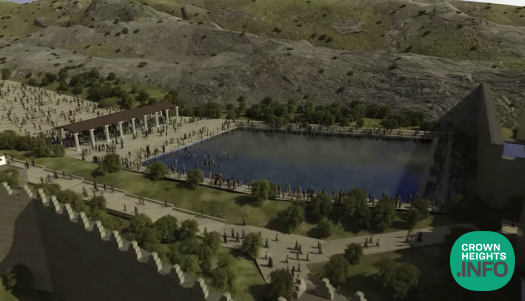
The Ancient Pool of Siloam, Used As A Mikvah Before Visiting The Beis Hamikdash, is Finally Revealed
The Israel Antiquities Authority, the Israel National Parks Authority and the City of David Foundation are pleased to announce the initiation of the excavation of the historic Pool of Siloam in Jerusalem.
The Pool of Siloam, located at the southern end of the City of David, and within the Jerusalem Walls National Park, is an archaeological and historical site of national and worldwide importance. According to the Bible, the pool was first built in the 8th century BCE in the reign of King Hezekiah, some 2,700 years ago, as part of Jerusalem’s water system:
“Now the rest of the acts of Hezekiah, and all his might, and how he made the pool, and the conduit, and brought water into the city, are they not written in the Book of Chronicles of the Kings of Judah?” (2 Kings 20:20)
The Pool of Siloam served as the reservoir for collecting the waters of the Gihon Spring, which were diverted in an underground water tunnel, and it was considered one of the most strategic areas of Jerusalem in the First Temple period. Due to its importance, the Pool of Siloam was renovated and expanded in the late Second Temple period, some 2,000 years ago. It is believed that at this time the pool served as a ‘mikveh’, a ritual bath, for the thousands of pilgrims who converged at the Pool of Siloam before ascending via the City of David to the Temple.
In 1880, the famous Siloam Inscription was uncovered carved on the wall inside the water tunnel, just a few dozen meters before the pool. The inscription, kept in the Istanbul Archaeology Museum, is incised in ancient Hebrew script and it records how the Gihon Spring waters were diverted through the tunnel to the pool.
Over the years many traditions have been grown up around the Pool of Siloam, and since the end of the 19th century, it has been a focus of archaeological expeditions from around the world. In the 1890s, a group of British-American archaeologists led by F.J. Bliss and A.C. Dickey uncovered some of the steps of the pool, and in the 1960s, the British archaeologist Kathleen Kenyon excavated the site.
In 2004, during infrastructure works carried out by the Jerusalem Gihon Water Company, some of pool’s steps were exposed. Subsequently, the Israel Antiquities Authority undertook a systematic excavation under the direction of Prof. Ronny Reich and Eli Shukron, exposing the northern and some of the eastern side of the pool. The perimeter of the pool was stepped, allowing bathers to sit and immerse themselves in the waters of the pool.
It is estimated that the Pool of Siloam underwent several building phases, and at its peak it was paved with fine flagstones and reached a maximum of 5 dunams (1¼ acres). For the first time in modern history, the Israel Antiquities Authority official archeological excavation will enable the exposure of the entire Pool of Siloam. At the first stage, visitors will be able to observe the archaeological excavations, and in the coming months, the Pool of Siloam will be accessible, as part of the tourist route that will begin at the southernmost point of the City of David and culminate at the Western Wall.
Mayor of Jerusalem, Moshe Lion, acclaimed the initiation of the project: “The Pool of Siloam in the City of David National Park in Jerusalem is a site of historic, national, and international significance. After many years of expectation, we will soon begin uncovering this important site and make it accessible to the millions of visitors and tourists who visit Jerusalem every year.”
Video rendering of the Pool of Siloam in the Second Temple period.
Production: Ran Tzahur
Video & Animation: Studio Umbrella














